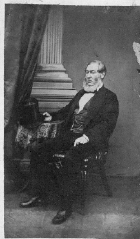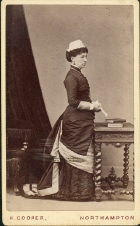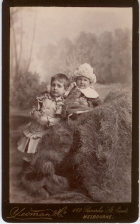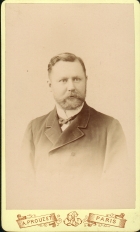News
June
seminars
There are no seminars scheduled for June.
FamilySearch
expansion plans
The LDS Church has announced its plans
program to increase public access to worldwide collections
of genealogy material. For the first time FamilySearch will
provide free services to archives and other records custodians who
wish to
digitise,
index, publish, and preserve their collections. The program expands
FamilySearch's previously announced decision to provide
online access to over two million rolls of unreleased microfilm
preserved in the Granite Mountain Records Vault.
Privacy and ID theft
The recent report in Proformat News about the New Zealand
Parliament planning to restrict access to BDM records 100 years for
births,
80 years for marriages, 50 years for deaths has prompted me to write
the following...
BDM certificates and their role in privacy and identity theft
The embargo on access to modern records held by BDM Registries across
Australia has to be one of the greatest impediments to progressing
family history. It is a well-known fact that finding your cousins
is one of the most fruitful ways of developing your family tree.
Knowledge and artefacts may have travelled down another branch of
your family tree. However, when you try to travel down that branch
following the paper trail you will come to an abrupt halt sometime
in the twentieth century as far as BDM records are concerned.
In South Australia the embargoed periods for these records are:
Births: 75 years
Marriages: 60 years
Deaths: 25 years
In this issue:
News
• June
seminars
• FamilySearch expansion plans
Privacy & ID
theft
Delving
into old family photographs
![]()
Adelaide
Proformat
5 Windana Mews
Glandore SA 5037
Australia
Tel: +61 8 8371 4465
Fax: +61 8 8374 4479
proformat@jaunay.com
Services
• Research
• Drafting charts
• Locating documents
• Seminar presentations
• Writing & publishing
• SA lookup service
• Ship paintings
However,
the Registrar has elected to not release indexes and has effectively
extended the embargoed period:
Birth Indexes: to 1928 (effectively now 79 years closure)
Marriage Indexes: to 1937 (effectively now 70 years
closure)
Death Indexes: to 1972 (effectively now 35 years closure)
There is a move in Australia for all states to have a uniform embargoed period
and the consensus seems to be favouring greater closure periods than those that
currently operate in South Australia and hence the increase in the embargoed
period by stealth. You can see the embargoed period for all Australian states
at: www.jaunay.com/bdm.html.
The bottom line is that tracing cousins born after 1928 or finding the married
name of females after 1937 is difficult. While there are a few ways that may
possibly get you around this barrier, they are not always able to produce
a result, can be very time consuming, and may involve considerable expense.
Why are these embargoes in place? You will usually hear two related explanations—privacy
and/or identity theft.
Frankly the issue of privacy is a furphy. The events of birth, marriage and death
are very public at the time they occur. Indeed many people proclaim them in newspapers
and conduct public celebrations to mark them. Many agencies hold these records
and they are freely available to the public. For example the SA Supreme Court
itself sees no need to keep information about Grants of Probate from the public.
The SA Lands Titles Office has no problem sharing marriage and death records
it holds in relation to land transactions. Newspapers and their personal columns
are readily available in the State Library of SA. If we really think births are
private, then why can anyone buy my 86-year-old mother’s birth certificate?
Do the elderly have less need for privacy?
Identity theft is another matter. Identity theft is the theft of personal information
that is then used to commit a crime. There is no doubt it is a major concern
for all in the community. But the question I (and others) ask is—is the
public access of BDM certificates resulting in identity theft? If it is, then
why is it not a problem in England where these certificates are readily available
to the recent past? Where is the evidence that criminals are buying these records
to create this fraud? If we really think birth certificates are used to create
false IDs, then why can anyone buy my 86-year-old mother’s birth certificate?
The next time I am in a library/archive poring over fiche I will look more carefully
at my neighbour—maybe they are a master criminal extracting records for
some devious plot. Frankly they would be better off stealing my wallet with its
credit and health cards and driver’s licence! If you think through the
process carefully, you will soon become aware of the difficulties a criminal
will encounter if they use someone’s birth/marriage certificate to create
a false ID and even if they did it with your records, the chances of it coming
back to you are not good. What birth/marriage record reveals your current address
and banking details? To open any new bank account in Australia requires the 100
Point Identification System and that means apart from the full birth certificate,
the criminal requires a range of other matching records.
If they were serious criminals though, they would be using the wonderful resources
of the Internet where everything is available if you know where to find it and
have the money to pay the fee. According to a recent NBC Dateline report,
a few dollars will buy you someone’s name, address, credit card number
together with its pin number. These items do not come via the purchase of BDM
certificates; they come via hackers breaking into computer systems with inadequate
firewall protection. Now and then you will hear of some major institution having
its records stolen in this way, but in effect the most vulnerable computers are
those sitting in private homes.
In closing, if you are concerned about these restrictions to BDM records, then
be aware that many other institutions holding records are considering their access
policies. The movement is gathering pace in North America and before long we
can expect the issue to be raised here in Australia.
Delving
into old family photographs pt 3
To identify a photograph and thus date it requires the researcher to undertake
the following detailed examinations. In past issues we dealt with:
1. Determining the type of photograph.
2. Analyse the mounting board itself.
3. Examine the back of the mount for printed information.
In this edition we will examine the fourth step in dating a photograph:
4. Examine the composition of the image—the pose and background.
How the subjects are posed and the way the Victorian photographer used
various pieces of furniture and other artefacts together with a backdrop
can also determine the era as the composition of photographs were very
much determined by the fashion of the day.
Due to the technical immaturity of the process, the bulk of nineteenth
century photographs were taken indoors although the trend towards outdoor
photography increased as we move towards 1900.
| 1860s | substantial pieces of furniture; support aids employed; subjects seated/standing full length; neutral backgrounds with classical features like drapes, columns and arches |
| 1870s | very elaborate chairs often for leaning on; 3/4 length subjects; basic outdoor sets |
| 1880s | elaborate outdoor sets featuring rocks, fences, swings, etc; oriental themes |
| 1890s | exotic sets; vignettes (head and shoulders) very popular; pot-plants featured; bicycles popular |
The following examples
typify each decade:
1860s |
1870s |
1880s |
1890s |
 |
 |
 |
 |
Arthur
McCorkell—solicitor husband of Jane Gilmour. |
Esther Puttick nee Smith wife of John Henry. | Blanche & Louis Frank Jaunay in Brisbane QLD. | Frank Cunningham Jaunay. |
To be continued in the next issue when we will detail the costume of the subjects depicted in photogrpahs.
Note: All photographs displayed are from the family albums of Graham Jaunay. They are currently subject to copyright.